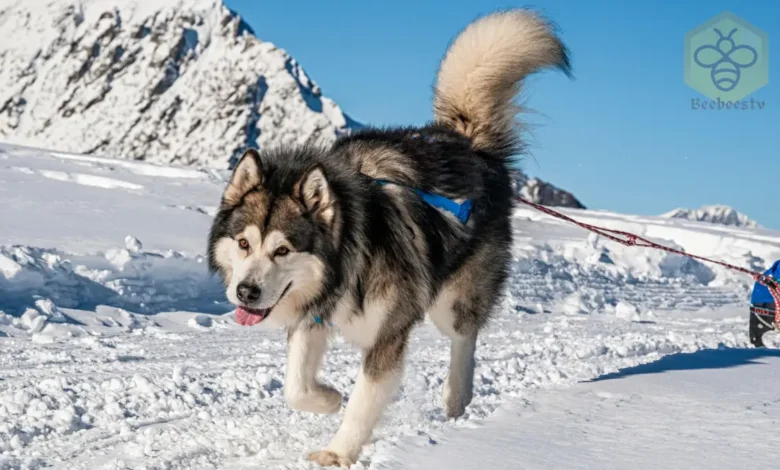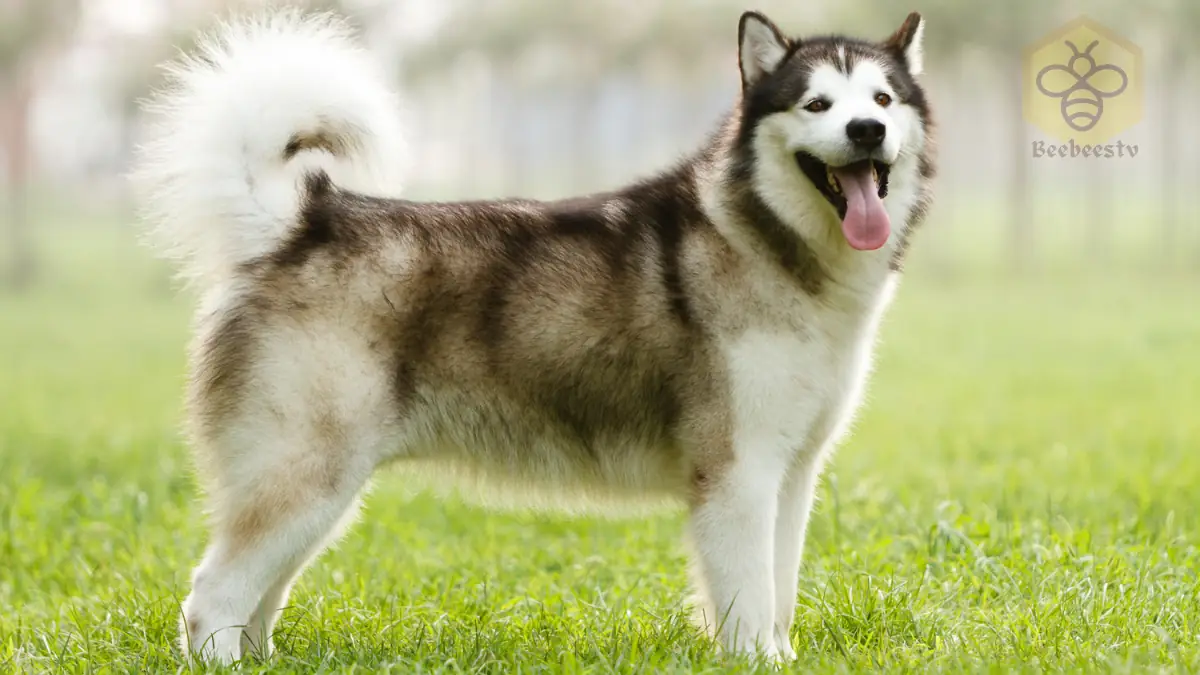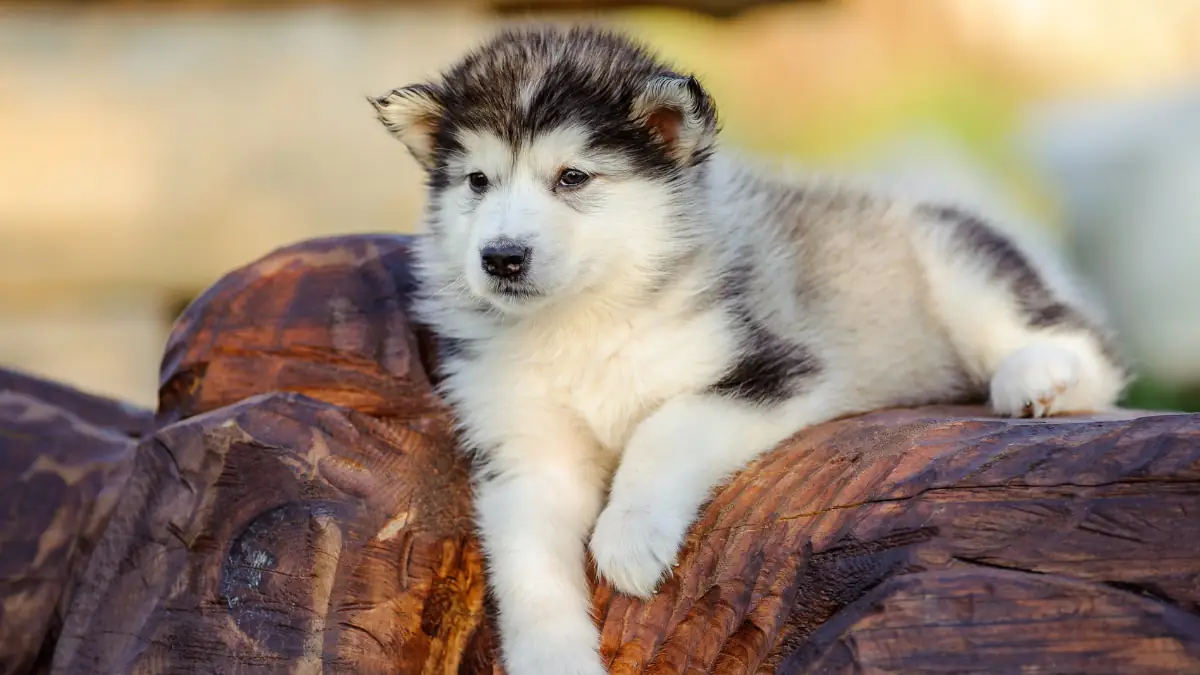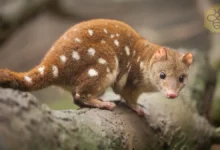Alaskan Malamute: A Powerful and Beautiful Breed

Alaskan Malamute: The Majestic Arctic Sled Dog
Alaskan Malamute
Introduction
The Alaskan Malamute is a powerful and ancient Arctic sled dog known for its strength, endurance, and loyalty. Originally bred by the native Inuit tribes for pulling heavy loads across vast snowy expanses, these dogs are still loved today for their gentle, social nature and striking wolf-like appearance.
Scientific Overview
Scientific Name
The Alaskan Malamute’s scientific name is Canis lupus familiaris.
Common Name
This breed is commonly known as the Alaskan Malamute.
Scientific Classification
Breed Group
The Alaskan Malamute belongs to the Working Group, known for its endurance, strength, and capability in heavy-duty tasks like sled-pulling.
Origins and History
The Alaskan Malamute is one of the oldest Arctic sled dogs, developed by the Mahlemut Inuit tribe in Alaska to pull sleds, hunt seals, and assist with other heavy tasks. During the 19th-century Gold Rush, these dogs gained popularity for their hardiness in the harsh Alaskan terrain, cementing their status as invaluable working dogs. Their impressive strength, stamina, and loyalty made them essential companions in Arctic exploration and transport.
Physical Characteristics
Size and Weight
Alaskan Malamutes are large and muscular, with a sturdy build suited to harsh environments:
- Height: Males reach about 25 inches; females are slightly smaller, around 23 inches.
- Weight: Males typically weigh 85-100 pounds, while females weigh 75-85 pounds.
Appearance
Malamutes are known for their dense, double-layered coat that comes in a range of colors, including black, gray, sable, and red, often with white markings on their face, chest, and paws. Their powerful, stocky build and curled tail give them a distinct and dignified appearance, and their upright, pointed ears and expressive eyes contribute to their wolf-like look.
Personality and Temperament
Malamutes are known for their friendly, affectionate, and outgoing nature. Here are some notable personality traits:
- Loyal and Gentle: Despite their imposing size, Malamutes are known for being friendly and gentle, especially with families.
- Energetic and Playful: They thrive on activity and are happiest when they have a job to do.
- Social and Pack-Oriented: Malamutes enjoy being with people and other dogs, as they have a strong sense of pack.
They are excellent family pets but may not be the best choice for novice dog owners, as their independent streak can require firm and consistent training.
Diet and Feeding Habits
Due to their large size and active nature, Malamutes require a balanced diet to support their energy needs. High-quality commercial dog food formulated for large breeds is ideal, with a diet rich in proteins to maintain muscle mass. It’s essential to monitor their portions, as Malamutes can be prone to obesity if overfed.
Some owners also opt for a raw or homemade diet, but it’s recommended to consult with a vet before making any major dietary changes.

Exercise Needs
Alaskan Malamutes are highly active dogs that require substantial daily exercise to stay happy and healthy. Their exercise routine should include:
- Daily Walks: Aim for at least one to two hours of walking or hiking each day.
- Playtime and Interactive Activities: Malamutes enjoy games like fetch or tug-of-war.
- Sledding and Pulling Activities: Given their heritage, they excel at pulling sleds or carts, which can provide mental stimulation as well as physical exercise.
Without enough exercise, Malamutes can become bored and may develop destructive behaviors, as they are naturally active and strong-willed.
Grooming and Maintenance
Alaskan Malamutes have a dense, double-layered coat that requires consistent grooming:
- Brushing: Brush their coat 2-3 times a week to prevent matting, and more frequently during shedding seasons.
- Bathing: Malamutes do not require frequent baths, as their coat naturally repels dirt, but an occasional bath can help keep them clean.
- Dental Care: Regular tooth brushing is essential to prevent dental issues.
- Nail Trimming: Keep their nails trimmed, as their active nature can lead to overgrowth if not managed.
Despite the dense coat, Malamutes do not shed year-round but will “blow” their coat twice a year, leading to heavy seasonal shedding.
Health and Lifespan
Common Health Issues
Alaskan Malamutes are generally healthy but are predisposed to specific conditions:
- Hip Dysplasia: A common joint issue in large breeds, which can lead to arthritis if untreated.
- Hypothyroidism: This hormonal imbalance can cause weight gain, lethargy, and skin problems.
- Progressive Retinal Atrophy (PRA): An eye condition that may lead to vision impairment over time.
- Bloat: Like many large breeds, Malamutes can be susceptible to bloat, a life-threatening condition that requires immediate attention.
Lifespan
The average lifespan of an Alaskan Malamute is 10-14 years, although some may live longer with proper care and attention.
Training and Socialization
Training a Malamute requires patience and consistency, as they are independent and sometimes stubborn. They respond well to positive reinforcement techniques, such as treats and praise, and benefit greatly from early socialization:
- Obedience Training: Basic commands are essential to manage their size and strength.
- Socialization: Exposure to various people, places, and animals helps develop a well-rounded temperament.
- Advanced Training and Agility: They enjoy advanced training tasks that keep their minds sharp and give them a sense of purpose.
Malamutes are not recommended for off-leash activities as their strong prey drive can lead them to chase small animals.

Behavior and Lifestyle
Independent but Affectionate
Though independent, Malamutes form strong bonds with their families and thrive on companionship. They enjoy being a part of family activities and are known to be playful and gentle with children.
Good with Families
Malamutes are affectionate with children, making them excellent family pets. However, due to their size, supervision around very young children is advised.
Ecological Role
In their native environments, Alaskan Malamutes played an essential role in transportation, helping their Inuit companions by pulling sleds and hauling supplies across vast, snowy terrains. This role is still honored in modern sledding and pulling activities, making them a living link to the cultures and survival practices of Arctic communities.
FAQs About Alaskan Malamutes
- Are Alaskan Malamutes good with children?
Yes, Malamutes are generally great with children due to their gentle and affectionate nature. However, due to their large size, it’s best to supervise interactions with small children. - Do Malamutes shed a lot?
Alaskan Malamutes have a dense coat and shed heavily twice a year. Regular brushing can help manage their shedding. - How much exercise does a Malamute need?
Malamutes need at least 1-2 hours of exercise daily. They enjoy activities like hiking, running, and sledding. - Are Malamutes difficult to train?
Malamutes can be independent and require consistent, positive reinforcement training. Early socialization and obedience training are essential. - Do Malamutes bark a lot?
Malamutes are not known to bark excessively but may “talk” in a howling or chattering manner to communicate with their owners.
Conclusion
The Alaskan Malamute is a loyal and strong-willed breed that excels as a working dog and family companion. Their impressive strength, intelligence, and affectionate nature make them ideal for active families who can meet their exercise and grooming needs. With their unique history and noble appearance, Alaskan Malamutes are a captivating breed that brings joy, adventure, and loyalty to their owners.


